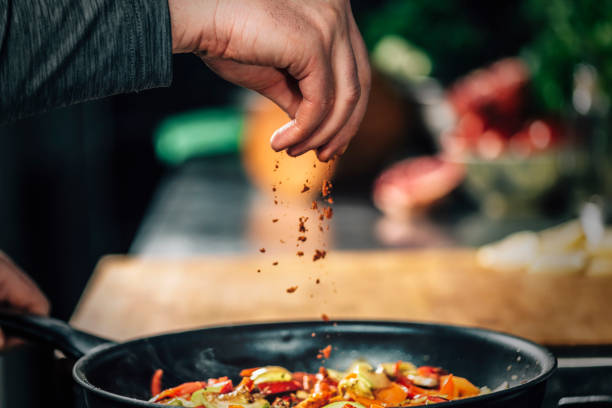Everyday Techniques to Improve Meal Texture and Mouthfeel
Texture and mouthfeel shape how we experience food almost as much as flavor does. Small adjustments in technique, ingredient selection, and timing can turn a dull plate into one with pleasing contrast and satisfying bite. This article outlines practical, everyday approaches—rooted in culinary basics—to help you refine texture across recipes, snacks, beverages, and mealprep routines.

Texture and mouthfeel influence enjoyment, satiety, and the perceived quality of a dish as much as taste. By focusing on contrasts, moisture control, and the physical properties of ingredients, home cooks and food professionals can elevate simple recipes into more engaging culinary experiences. The following sections cover actionable techniques — from ingredient swaps to handling and timing — that improve body, bite, and finish across cuisine types and meal occasions.
How can recipes change texture?
Altering a recipe’s proportions or technique often yields the largest texture improvements. For example, adjusting fat-to-liquid ratios in batters and doughs modifies tenderness and crumb: more fat typically shortens structure for a softer bite, while slightly less produces more chew. Adding components like pureed vegetables, ground nuts, or soaked grains introduces body without heavier flouring. For beverages, blending with ice or dairy alternatives changes viscosity and mouth-coating sensation. When adapting recipes for seasonal or sustainable ingredients, test small batches to maintain balance between structure and moisture.
Which ingredients affect mouthfeel?
Different ingredients bring distinct physical properties: fats provide creaminess and lubricity; starches thicken and add body; acids can tighten proteins for a firmer bite; and fiber contributes chew and bulk. Proteins from dairy, eggs, or plant sources create gel networks that influence springiness in custards, mousses, and some snacks. Hydrocolloids like gelatin, agar, or xanthan gum are technical tools to fine-tune viscosity and suspension in both savory and beverage applications. Thoughtful combination of these ingredients—considering nutrition and preservation—allows you to shape texture while keeping flavors aligned.
What cooking methods improve texture?
Technique often trumps ingredients when it comes to mouthfeel. High-heat searing locks in moisture and creates a crisp exterior, while low-and-slow braising breaks down connective tissue for tender results. Shock-cooling blanched vegetables helps retain a snappy bite, and resting baked goods before slicing stabilizes crumb structure. For snacks and small plates, methods like toasting, frying, or dehydrating introduce desirable crunch that contrasts softer elements. In mealprep, reheating gently, using steam or low oven temperatures, preserves texture better than microwaving aggressively.
Can fermentation alter mouthfeel?
Fermentation changes both flavor and texture in meaningful ways. Lactic fermentation can soften fibrous vegetables, yielding a tender yet crisp bite and a pleasant effervescence in beverages that affects perceived lightness. Yeast fermentation in bread creates open crumb and chew, while sourdough fermentation modifies gluten structure for a more complex mouthfeel. Fermented dairy products like yogurt and cultured creams develop acidity and viscosity that coat the palate differently than their fresh counterparts. Incorporating fermentation into recipes or pairings can add nuance to texture as well as flavor and preservation benefits.
How does pairing influence perception?
Pairing components with complementary textures enhances overall meal satisfaction. Serving a creamy main with acidic, crunchy garnishes creates balance and cleanses the palate between bites. Temperature contrasts—warm stew with chilled pickles or chilled yogurt—alter mouthfeel and highlight different flavor notes. In beverage pairing, tannic or carbonated drinks can cut through richness and reset the mouth, while silky beverages will harmonize with delicate desserts. Considering pairing during mealprep or plating helps craft a multi-dimensional eating experience that keeps each bite interesting.
What preservation and storage tips help texture?
Preservation choices directly affect next-day texture. Freezing is convenient but can cause moisture migration; wrap items tightly and consider partial pre-cooking for better post-thaw texture. Brining and curing change protein structure to retain juiciness in cooked meats and can improve bite in snacks. For salads and fresh preparations, store dressings separately to prevent sogginess until service. When using seasonal produce, minimal preservation like quick-pickling can maintain a crisp, vibrant mouthfeel while extending usability. Attention to storage conditions in your pantry or fridge supports sustainable mealprep and consistent texture.
Conclusion Improving texture and mouthfeel is a practical path to making everyday dishes more satisfying. By experimenting with ingredient functions, applying targeted cooking techniques, leveraging fermentation, and thinking about pairing and storage, cooks can create contrast and balance that elevate both simple recipes and planned meals. Small, deliberate adjustments—rather than dramatic overhauls—often produce the most reliable improvements in how food feels and is enjoyed.





